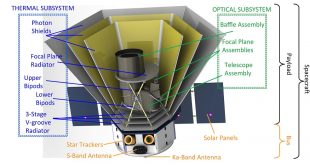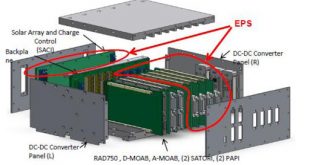Introduction: In an era marked by the increasing militarization of outer space, the United States Department of Defense (DOD) has embarked on an ambitious mission in recent years—to enhance its Space Situational Awareness (SSA), Space Domain Awareness (SDA), and Space Battle Management capabilities. With several nations developing anti-satellite weapons and …
Read More »Lunar 4G/5G: Connecting the Moon and Beyond
Introduction: The Moon, Earth’s celestial neighbor, has long captured the imagination of humanity. From the Apollo missions of the 20th century to the exciting plans for future lunar exploration, our fascination with the Moon persists. As we gear up for a new era of lunar exploration, one crucial aspect to …
Read More »Pioneering the Cosmos: The Crucial Role of Spacecraft Thermal Control Subsystems (TCS) in Future Space Exploration and Colonization
Introduction As we venture into the limitless expanse of space with aspirations of exploration and colonization, spacecraft face an unprecedented set of challenges. Beyond Earth’s protective embrace, these vessels must endure extreme temperature fluctuations that range from searing heat in direct sunlight to bone-chilling cold in the shadows of celestial …
Read More »Navigating the Cosmos: The Marvels of Spacecraft Avionics
Introduction: The exploration of outer space has been one of humanity’s greatest achievements, driven by innovation and cutting-edge technology. At the heart of every successful space mission lies a complex and highly sophisticated system known as spacecraft avionics. These electronic systems serve as the lifeblood of aircraft, artificial satellites, and …
Read More »Unlocking the Mysteries of Space with Terahertz Technology: Exploration, Colonization, and Security
Introduction: Space, the final frontier, has always captured the imagination of humanity. As we venture further into the cosmos, we are confronted with numerous challenges and opportunities. Terahertz (THz) technology, a relatively lesser-known field of study, holds tremendous potential for transforming the landscape of space exploration, colonization, and security. In …
Read More »Nanotechnology in Space Exploration and Colonization: A Glimpse into the Future
The realm of space exploration has always been about pushing boundaries, seeking new frontiers, and advancing technology to achieve the seemingly impossible. In this quest, one field of science has emerged as a game-changer: nanotechnology. Harnessing the power of the infinitesimally small, nanotechnology has the potential to revolutionize space exploration …
Read More »Metamaterials and Metasurfaces: Revolutionizing Space Technology
Introduction The exploration of outer space has always been a frontier of human ambition, and it requires cutting-edge technology to navigate the vast cosmos. In recent years, scientists and engineers have turned to metamaterials and metasurfaces to revolutionize space applications. These artificial materials and surfaces have unique properties that defy …
Read More »Rising Threat of Software Errors and Cyber Attacks on Mission-Critical Systems: DOD’s Thrust on Software Assurance
Introduction In an increasingly digital world, mission-critical systems are the backbone of our modern infrastructure. From healthcare and transportation to defense and space exploration, these systems ensure that vital operations run smoothly and securely. In today’s digital age, software is the backbone of mission-critical systems. Whether it’s healthcare, transportation, defense, …
Read More »Academia and the Future of Space Exploration and Colonization
Introduction Space exploration and colonization have long captured the imagination of both scientists and science fiction enthusiasts. While it once seemed like a distant dream, recent advancements in technology and the growing interest from both government agencies and private companies have brought space exploration closer to reality than ever before. …
Read More »China’s New Global Initiatives: Building a Better World
Introduction: China’s emergence as a global leader has brought with it a sense of responsibility and a commitment to shaping a more equitable, peaceful, and prosperous world. In recent years, China has unveiled three significant global initiatives: the Global Development Initiative (GDI), the Global Security Initiative (GSI), and the Global …
Read More » International Defense Security & Technology Your trusted Source for News, Research and Analysis
International Defense Security & Technology Your trusted Source for News, Research and Analysis



